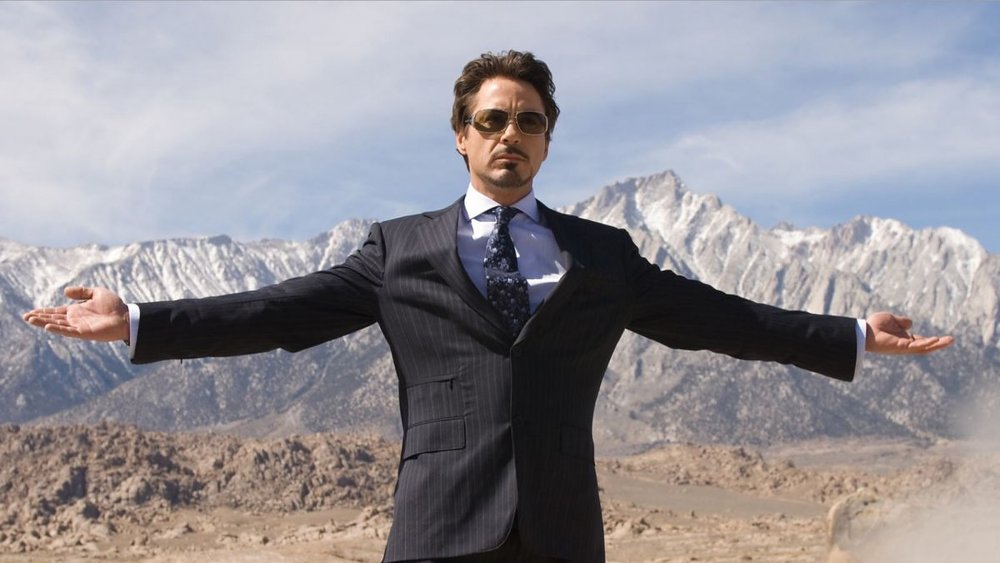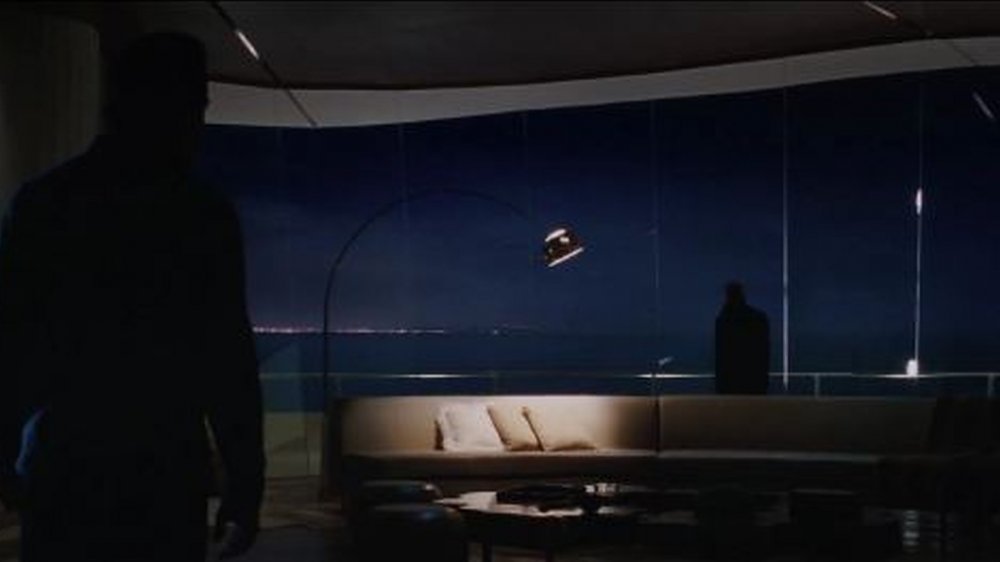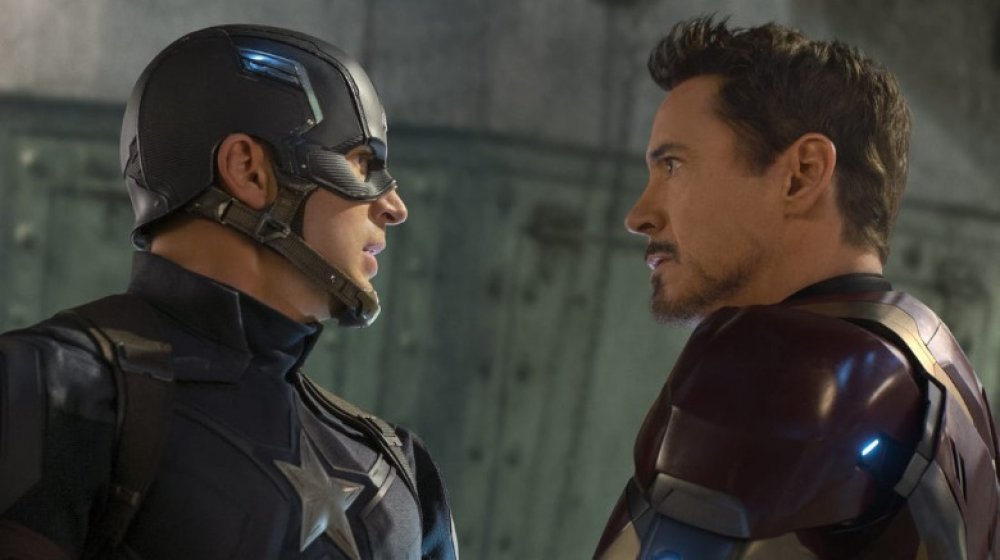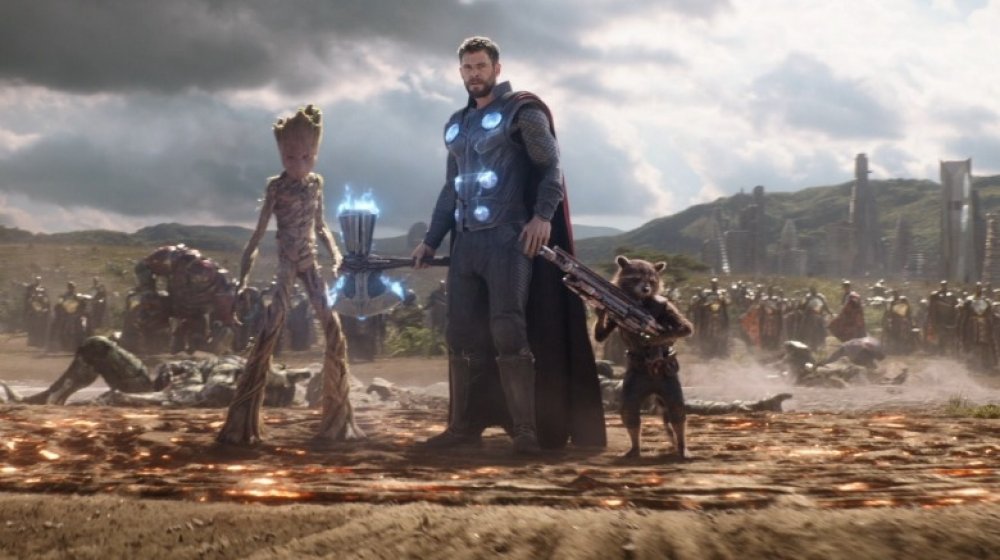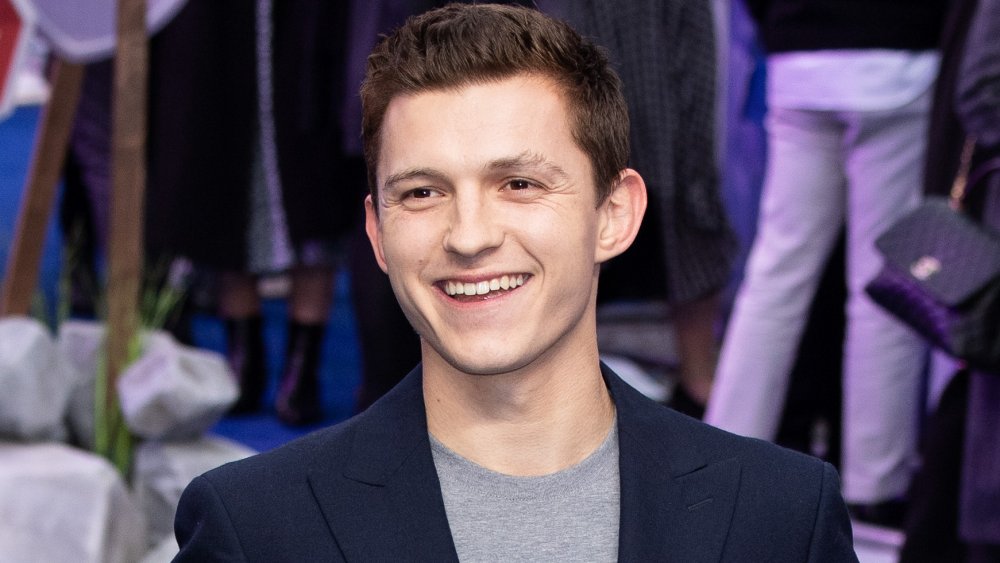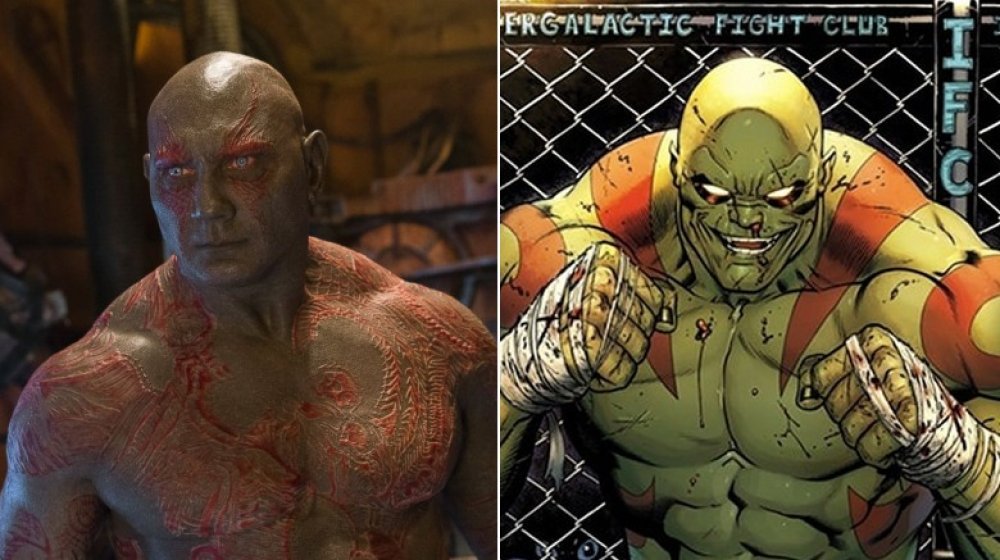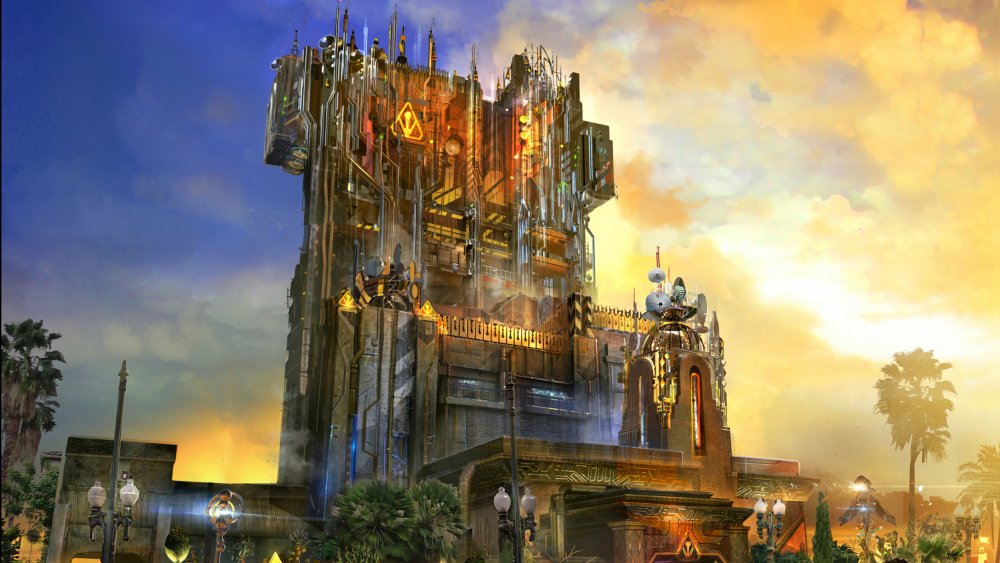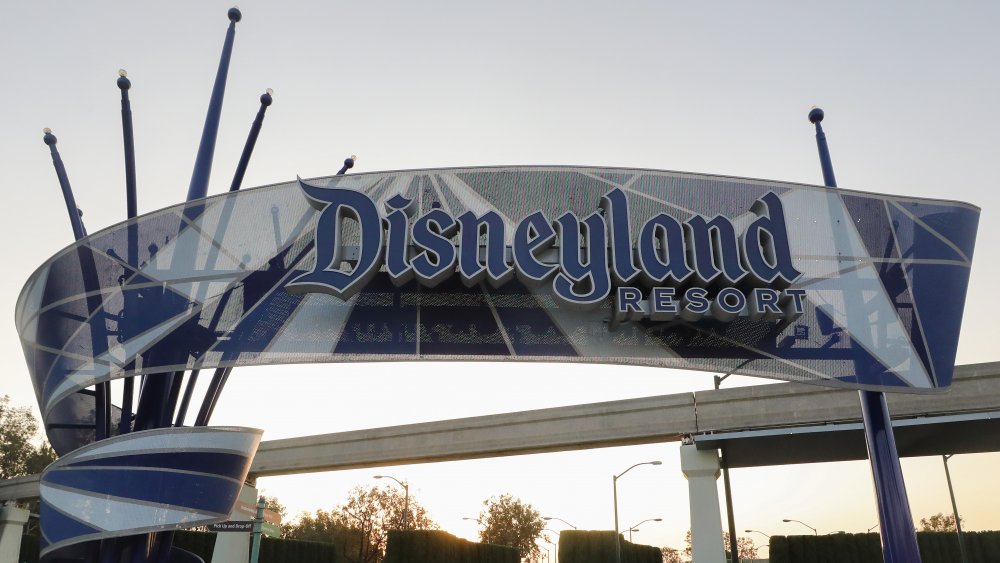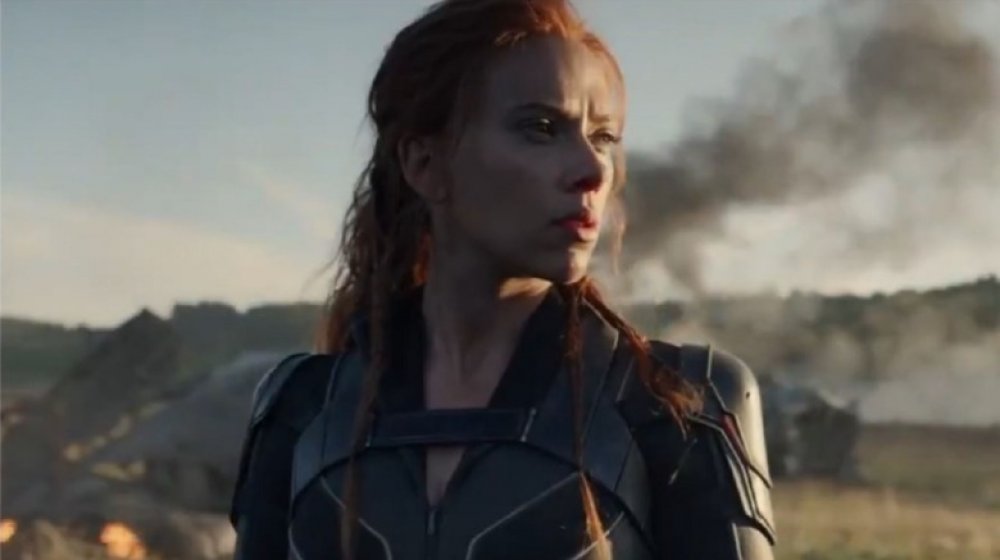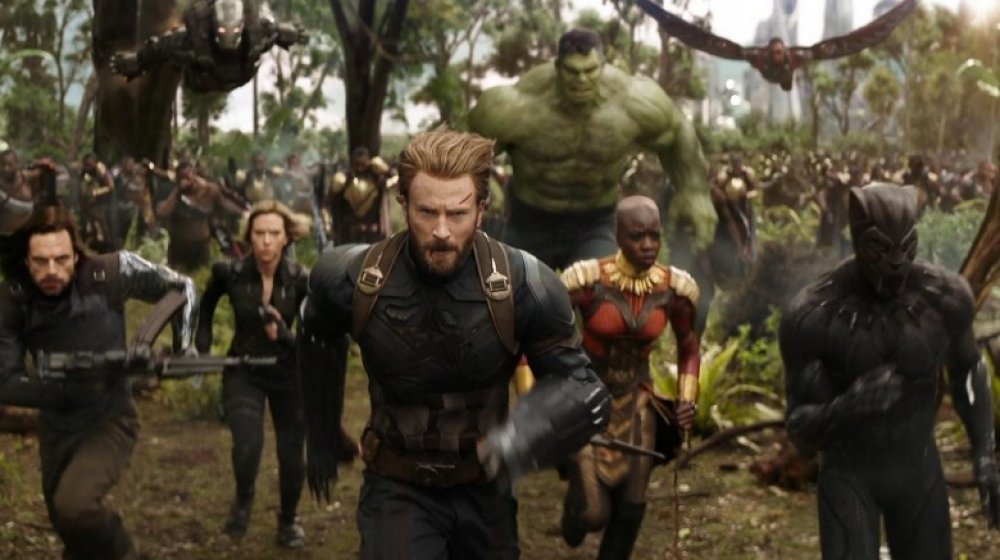Sneaky Ways Marvel Gets You To Spend More Money
It may be surprising that a media giant like Marvel needs to resort to incognito tactics to secure the loyalty and growth of its brand, but in an increasingly competitive entertainment market, every entity has to defend their stake. Not only that, but Marvel had quite the rocky beginning as it began to transition into the film industry, forced to sell off the rights to two of its major franchises, Spider-Man and X-Men, to Sony Pictures and 20th Century Fox, respectively. But new deals and acquisitions resulting from their rapidly growing success have allowed them to incorporate more and more of these lost characters into their ever-expansive universe, which includes a commendably solid fandom surrounding their existing heroes.
This level of accomplishment is due in large part to the meticulous marketing tactics employed by Marvel from the very beginning. Long before the film of that name was introduced, the studio was working toward an endgame. This master plan involved intertwining breadth with depth, building the characters of individual superheroes while promising that each one would somehow contribute to an epic tale of galactic proportions. Through it all, Marvel has maintained awareness of both its brand and its fan base, not only getting audiences invested (in terms of both money and emotion) but offering them a universe they see as worth the price.
The end is the beginning
Marvel is famous for leaving a scene at the end of the credits that often has a good joke or, more importantly, a suggestion of the drama we'll see in a subsequent movie. Better yet, it hints at a crossover event, or at the very least how the events of this film will impact another hero in his or her subsequent adventures. Either way, if we're excited enough to wait through the credits for these little nuggets, we're definitely going to buy tickets for the next film.
This is the crucial way that Iron Man introduces the Avengers Initiative in 2008. In the post-credits scene, when Tony returns home to Malibu, he finds Nick Fury waiting in the shadows of his mansion. Fury tells him that by taking up the mantle of Iron Man, he has become "part of a bigger universe" — this universe, at least in the film sense, was mostly unrealized at this point.
Fury is telling Iron Man, and the audience, to get ready to meet (and in the case of the audience, line up and pay to see) more heroes. This tactic is used throughout the MCU: The Avengers are teased again at the end of Thor in 2011, and the same year's Captain America features a deleted scene from The Avengers itself in which Fury gives Steve Rogers a mysterious assignment.
Crossover events between heroes
Marvel superhero meetups like 2016's Captain America: Civil War are a great way to rake in more fans as the continuity of one hero's storyline starts to depend on that of another. Now, if you want to make sure you're up to speed on Captain America, you're going to want to investigate Iron Man as well — and vice versa.
Slowly building the relationships between individual heroes allows the studio to amass a fan base that draws from every corner of the Marvel universe. Even before releasing films specifically marketed as clashes between iconic heroes, let alone gigantic crossover events like Avengers: Infinity War, we get bite-sized chunks of the full superhero ensemble in movies like 2014's Captain America: The Winter Soldier, where we get a more intimate look at Black Widow and Cap.
You might be thinking, "Wait a second, the DC Extended Universe has done crossover events as well." They have done them as well ... but they haven't done them well. The critical mistake that these endeavors made was jumping right into a superhero mashup without fully developing the characters first. We hadn't even met Ben Affleck's Batman before Batman v. Superman: Dawn of Justice in 2016. Marvel, though, established fan loyalty to individual heroes, which meant they knew they could count on an additive effect for crossover events.
Ramping up to major crossover events
The whole Avengers storyline has been meticulously planned out over multiple decades, with Phase One culminating in the first Avengers movie. Two phases later, Avengers: Infinity War was argued as the most ambitious crossover event in history. All of the studio's crossover events have marketing value not just in the superhero film world but in the cinematic community in general, simply because they genuinely are ambitious and tackle production undertakings that have arguably never been done before. They are infinite hype-generating machines.
This grand ambition is realized in what most fans and critics would call a success because it has been the plan all along. A lot of sequels arise as a response to a surprising initial success and the clamoring of fans for another installment: This creates the almost unavoidable pitfall of simply regurgitating the formulas of the original success rather than expanding upon it. Marvel is different because it didn't count on success coming first: It knew that the payoff would come later, as long as the first ventures into cinema could at least hold water.
Massive crossovers are greater than the sum of their parts. They draw more than just fans of the MCU or of individual superheroes: They draw action and fantasy fans who want to be pulled to the edges of their seats, as well as critics and film buffs who seek to defend their skepticism.
Brand awareness and risk
Marvel harnesses memes to their advantage, typically, rather than resenting them. One of the formats that became most popular on Reddit, Twitter, and Instagram, especially among Gen Z, was the strain of "most ambitious crossover event in history" memes surrounding the marketing and release of Infinity War. Even if some of them were created with a bit of a sardonic tone that could even be construed as poking fun at the overwhelming mainstream hype for the film, all of them did the valuable work of publicity. Even absurdist press is good press.
And of course we're all aware of Tom Holland's tendency to spoil major plot points. Marvel's revelation that they had Benedict Cumberbatch babysit him to make sure he didn't spill the beans during interviews, though it was probably necessary, was also endearing to fans. The studio sells the actors' personalities as well as the characters and stories. When the #DontSpoilTheEndgame campaign launched on social media, fans were unavoidably reminded of Holland's adorable blabbing. The Avengers' verified Twitter account even released a video of the stars imploring fans to take charge of this "final mission."
Nostalgia without getting stuck in the past
Expanding into film is an expected step for a successful comic book universe. The generation that grew up on Marvel comics provides a good initial fan base, and the cinematic universe must be careful to preserve the nostalgia and not abandon the audience that gave them their first successes. This process is reminiscent of the task of turning a book into a movie: If you alienate the readers who have been waiting to see their favorite stories play out on screen, you'll alienate a large portion of your audience.
However, Marvel remains conscious of its appeal to younger audiences, not just with engaging storylines but with the aesthetics of the films themselves. They use special effects not only to orchestrate captivating fight scenes and cosmic imagery but to tell the deeper stories of the characters and the fantastical world they inhabit. Special effects bring to life, in an utterly new and detailed way, the tattoos all over Drax the Destroyer's body in 2014's Guardians of the Galaxy. In a deleted scene, not even fully animated, we learn that these markings tell the history of his life, including the day his daughter was born (the only day he ever wept).
Marvel uses the forward trajectory of entertainment technology to unify the history of the Marvel heroes — and their fans — across generations and into the future, making each new installment something all ages of the family will want to see.
Amusement parks capitalize on your biological needs
Everybody's gotta eat. But funnel cakes and ice cream cones don't exactly fall under the umbrella of basic nutrition. Theme parks, though, would have you believe otherwise. The sprawling grounds invite youngsters to scamper faster and faster to each new attraction, and along the sometimes exhausting route, you'll never be at a loss to find some heftily priced fuel for the journey. They also offer "all-inclusive" meal plan passes, which sound like a deal but may or may not be worth it, depending on how much you actually want to eat there.
The cherry on top of all that is the way parks use characters, themes, and novelty to get you to spend even more, usually to appeal to your kids. Marvel has many attractions still in development, but when they are finally unveiled, fans and park-goers will be sure to gobble them up. The upcoming Avengers Campus at Disneyland will feature the Pym Test Kitchen, which "uses" the fictional Pym Particles — the ones that allow Ant-Man and the Wasp to complete their transformations — to serve both large and small-sized foods. You're going to have to try one of everything, just for the photo ops!
Old to new
When you take a ride on The Guardians of the Galaxy Mission: Breakout attraction at Disneyland, depending on how old you are, you might notice something a bit familiar. This ride uses the same system and structure as the classic Twilight Zone Tower of Terror ride that it replaced: that of a "drop tower/dark ride," which combines elements of free fall around a central tower and an indoor guided experience through specially lit scenes.
These rides typically follow a narrative that the park-goers enter into when they board the ride. The original Tower of Terror alerts riders that the seemingly normal elevator has actually been the site of a number of supernatural disappearances. In the Guardians of the Galaxy variation, Rocket Raccoon enlists the help of riders in freeing the rest of the Guardians from the Collector's fortress.
This ride is just one of many examples of Marvel and Disney's expert manipulation of brand and audience continuity. Younger generations may not be familiar with The Twilight Zone, but older generations will remember the show and the Tower of Terror experience. Meanwhile, the classic ride formula continues to serve as a popular attraction, repurposed for today's eager audiences.
Avengers Campuses
One of the most fascinating things about the way Marvel is marketing its upcoming theme park campuses is that the entertainment giant is playing, quite intelligently, on the infrastructure of its cinematic universe in order to create the most lucrative attractions. The options are wide open for the Avengers Campuses at various Disney parks. The Walt Disney Studios Park is planning an Iron Man-themed renovation of Rock 'n' Roller Coaster, and Disneyland will implement, among other things, an interactive screen ride centered around Spider-Man.
The new campuses offer prime real estate for classic theme park moneymaking schemes. Of course, since Disney owns Marvel now, they'll likely use the same tried-and-true tactics that have reliably brought revenue in the past, like arranging the exits to most attractions to lead you through gift shops or putting costumes — of everyone's favorite superheroes this time instead of Disney princesses — at children's eye level.
Checking boxes
Disney parks, which will soon house the Avengers Campuses, give you a "checklist," or in Epcot's case, a "passport," that makes you almost compulsively want to visit as many attractions as you can. This checklist does more than fill you with a sense of obligation, however: It also taps into the universal experience of FOMO, the fear of missing out. Even if you can inoculate yourself against the imperative to see everything, that still leaves you with the responsibility of deciding what will make the cut for the day.
The psychological warfare continues long after you've managed to make these decisions, however: Because you chose to visit some attractions to the exclusion of others, you'll want to be sure you made the right choice to give yourself the best day. If you have to spend a little more on snacks or souvenirs to feel like your opportunity-cost analysis was worth it, so be it!
A preformatted itinerary also means you'll be exposed to more expertly placed advertising and add-on experiences, get hungrier along your frenetic journey, and no doubt pass by more gift shops. The Marvel universe is so expansive that, once it reaches its full presence in Disney parks, it will definitely profit off of this strategy: There could be six categories of experiences to check off, one for each Infinity Stone, perhaps? And the only way to save the world is to do it all? The marketing possibilities are endless.
Branding everyday products
You'll no doubt recognize the iconic, borderline cliche horror movie realization that "the call is coming from inside the house!" Well, Marvel's marketing comes from inside your home as well. With the release of each new film, superheroes begin to pop up on cereal boxes, toothpaste tubes, and Kleenex containers. The staples of your home become billboards with constant access to your attention, even more so if you have children.
Say you buy your kid a Spider-Man toothbrush, just as one example. It's cheap and something you'd buy anyway. It's not even some super-expensive costume or toy but rather a pretty cost-effective way to satisfy your child's burgeoning obsession with the web-crawler. But this is how the brand forms a bond with children. Spider-Man is now the child's bedtime companion, and if he wasn't their favorite superhero before, he is now. You can bet your kid'll be asking for more expensive toys, or at the very least, tickets to the next movie. And the kid won't forget about these requests, because there will be a constant reminder, literally, morning and night.
The long game
Marvel has its movies mapped out until at least 2028. In the early film days, they had lost custody, so to speak, of some of their biggest names. Iron Man was Marvel's first self-financed film: It was a bit of a risk for this reason alone, along with the fact that at that point, if you can believe it, Iron Man was one of their much lesser-known heroes!
It would have been tempting to jump right into The Avengers just to get enough names on the screen to make a big buck out of the combined energy of more minor heroes. But instead, they took their time, teasing and enticing fans until the base became so loyal that it was all financially worth it. This way, they can pull fans from all different niches, and when crossovers happen, fans are already salivating for it. And you don't confuse everyone by introducing a bunch of characters at once, like in DC's 2016 Suicide Squad.
And once the Marvel characters have "assembled," the franchise doesn't just forget about the individuals: Iron Man 3, for example, explores Tony Stark's personal struggles after the events of The Avengers. And looking to the future with three phases of the MCU behind us, we've also been hyped up for Black Widow to get her own movie in 2021 to kick off Phase Four. The Marvel Cinematic Universe is a machine that fuels itself.
Misleading trailers — on purpose
Trailers are crucial for film marketing. You'd think that means they should offer an accurate depiction of what they're selling, but you might be wrong. Like the theory that Apple intentionally makes its old devices run slower so you'll buy new ones, there has long been a conspiracy theory among fans that Marvel edits its trailers to lie to viewers on purpose. One common complaint is that the Infinity War trailer features the Hulk rushing into battle alongside the rest of the Avengers, but he's barely in the film! This misleading trend in trailers has actually been confirmed by directors as intentional.
Though the pattern upsets many fans, from an industry standpoint, there are a few rational reasons that Marvel might employ this strategy. For one thing, as the universe grew more complex and the climax drew nearer, it became even more important to avoid spoilers — and what better way than to just ... lie?
Intentionally misleading audiences also has the potential to foster curiosity that will turn into ticket sales. And if not curiosity, notoriety will do, like some fans discussing why no one sued Marvel for misleading everyone about Infinity War. The fact that this point was even raised speaks to just how invested the public is, fiscally and figuratively, in the Marvel Cinematic Universe.
